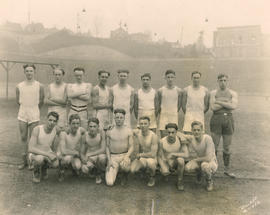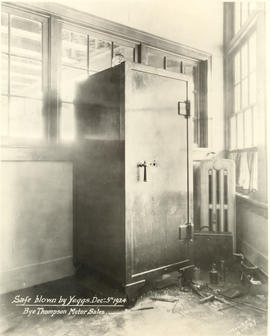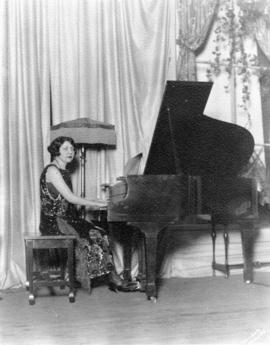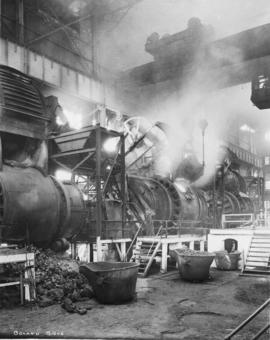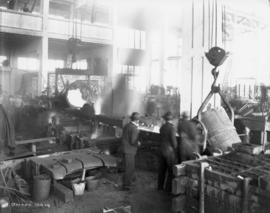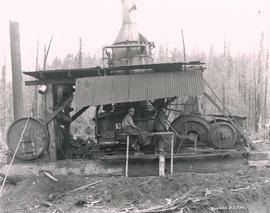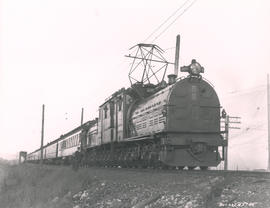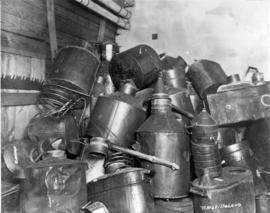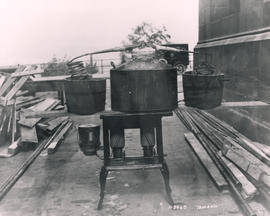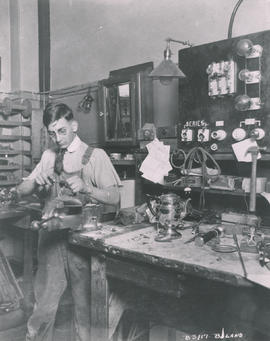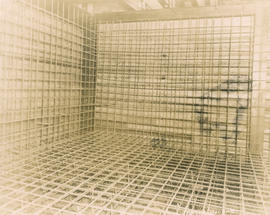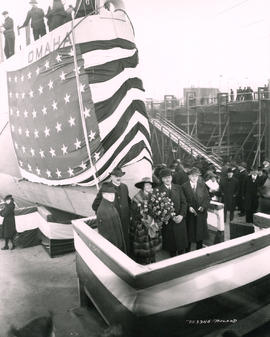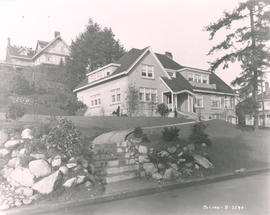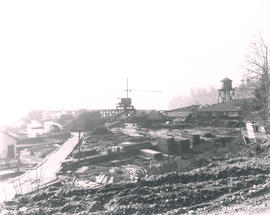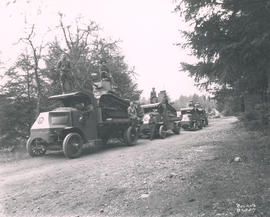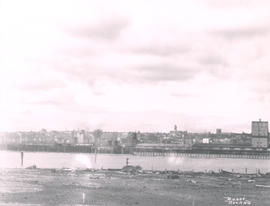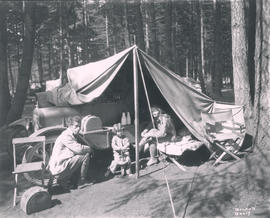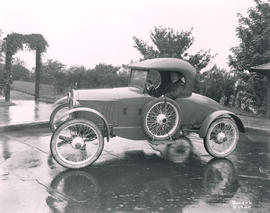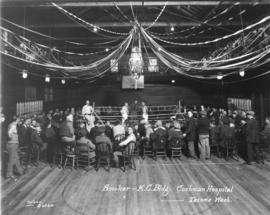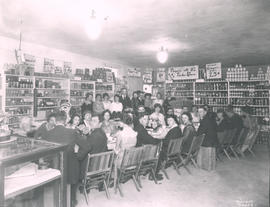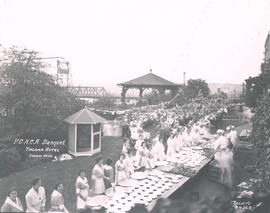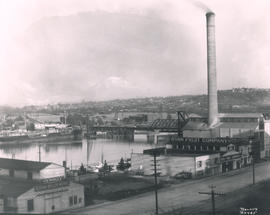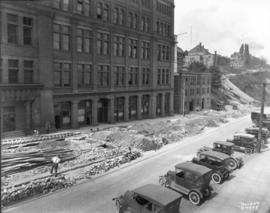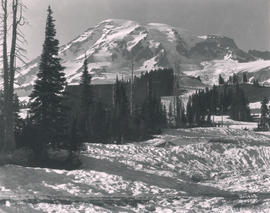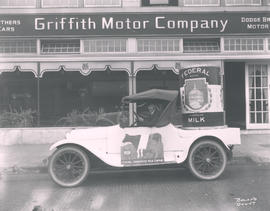Miss Louise Bushnell White, sponsor, stood on the launching platform to pose for pictures on December 14, 1920 after smashing the customary bottle of champagne on the USS Omaha at Todd Shipyards in Tacoma. She was chosen to represent her home city of Omaha partially because she was a descendant of David Bushnell, inventor of the one-man submarine during the Revolutionary War. Posing with her on the platform are (order unknown) C.W. Wiley of Seattle, pres. of Todd Drydocks Inc., William H. Todd of NYC, pres. Todd Shipyards Corp. (believed to be left) and J.A. Eves of Tacoma, VP and general manager of Todd Drydock and Construction Corp. This was the 27th launching at the Todd yard. The Omaha was the longest vessel to be launched in the Northwest (at 550 feet, 6 inches) and the first ever to be launched bow first. It was a scout cruiser, the first of 10 scheduled to be built for the Navy, 3 currently under construction at Todd. The Omaha (CL4) was built as Hull #30 and delivered to the US Navy on February 24, 1923. It was scrapped in 1946. (TDL 12/15/1920, pg. 1+, 12/14/1920, pg. 1) G37.1-172; TPL-9554
White, Louise Bushnell; Launchings--Tacoma--1920-1930; Todd Dry Dock & Construction Corp. (Tacoma); Boat & ship industry--Tacoma--1920-1930;
